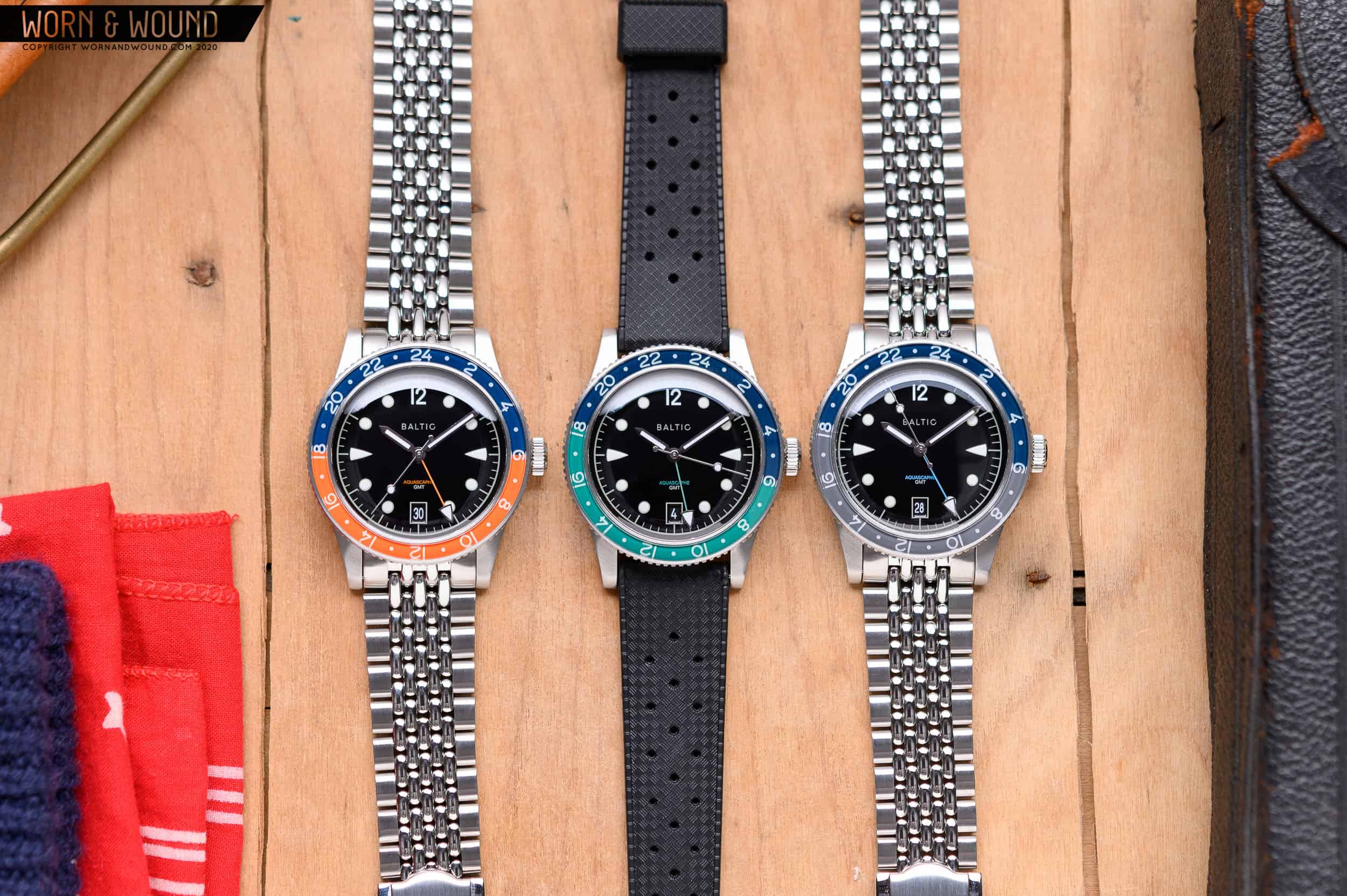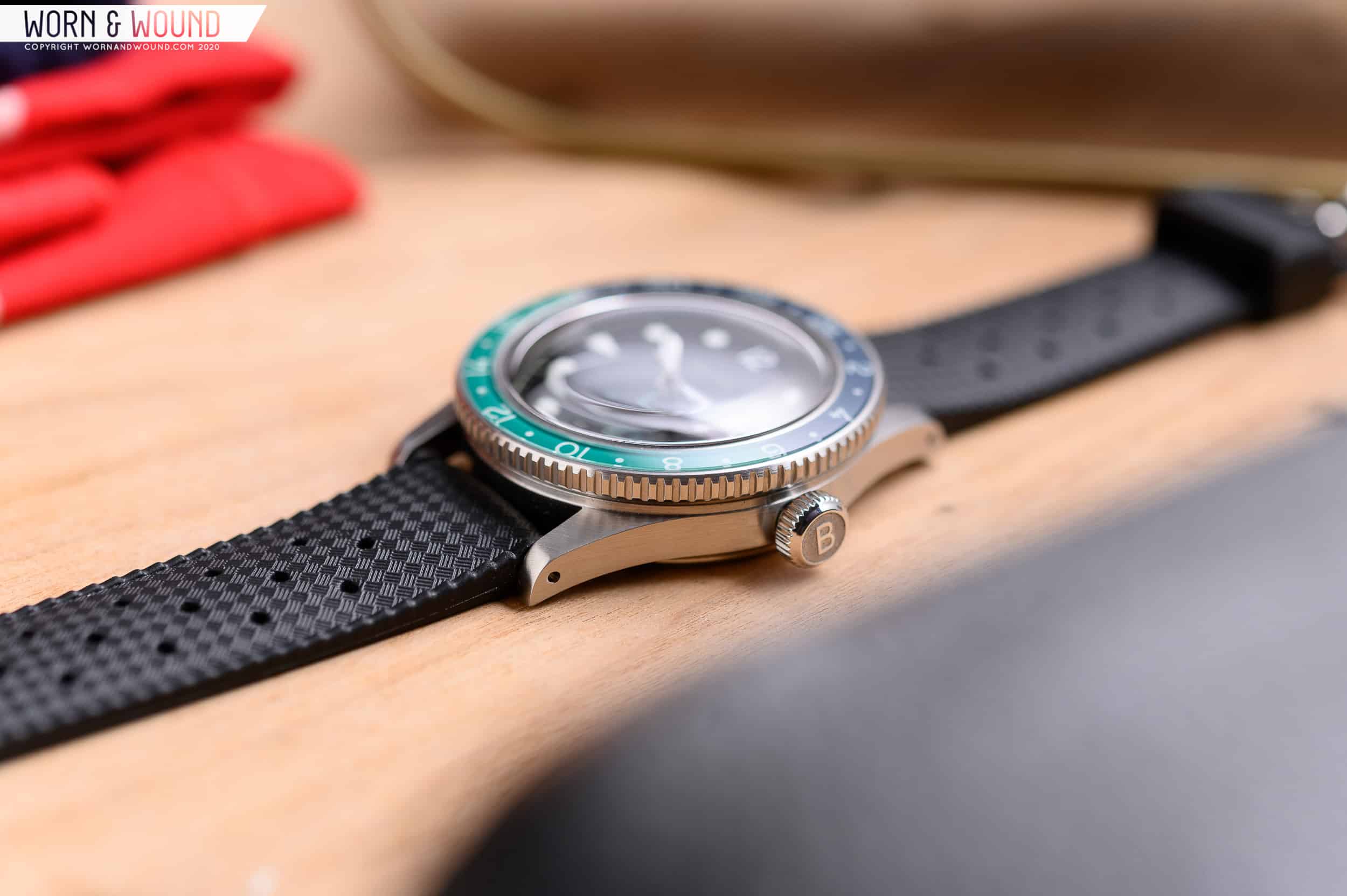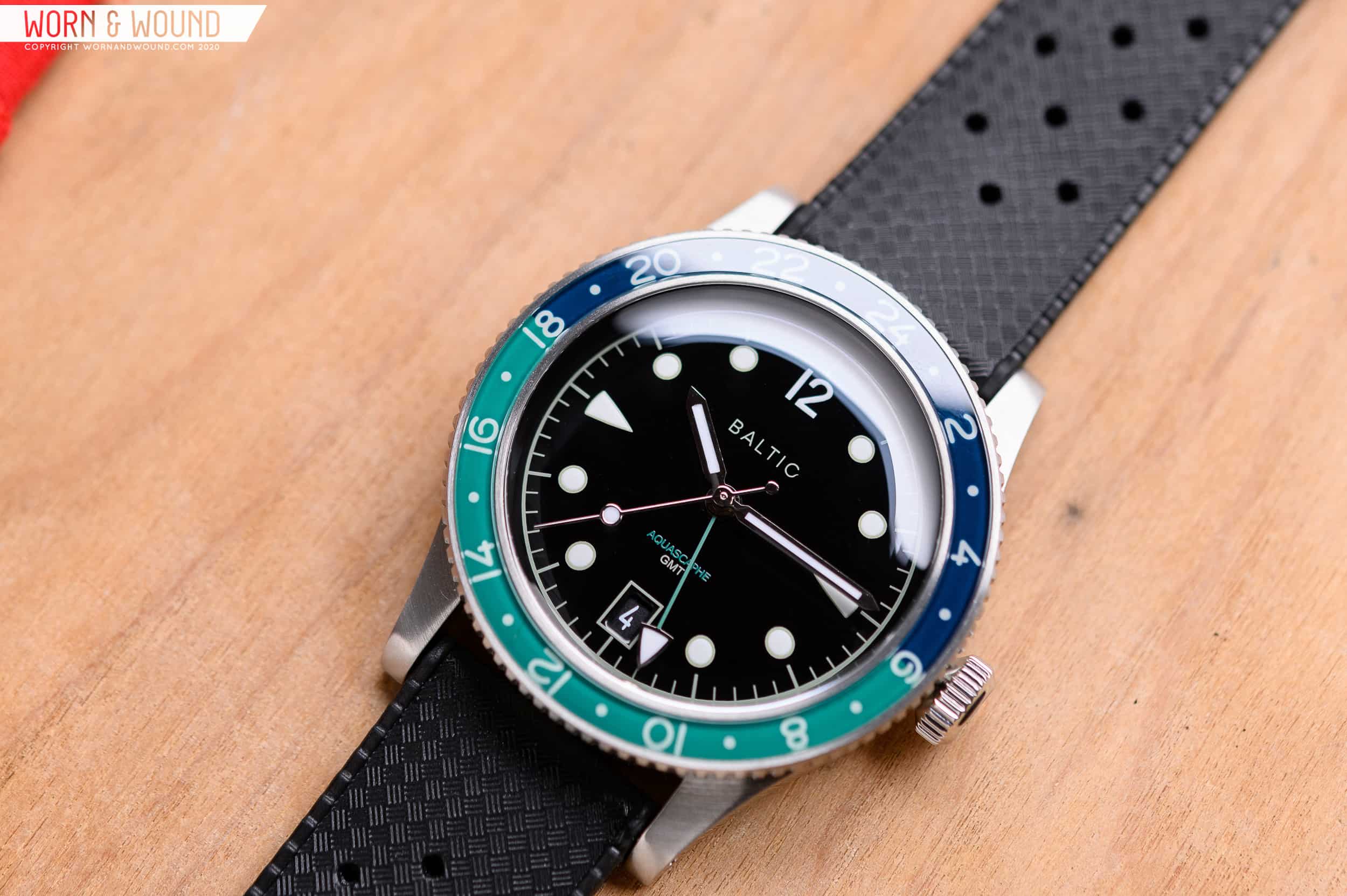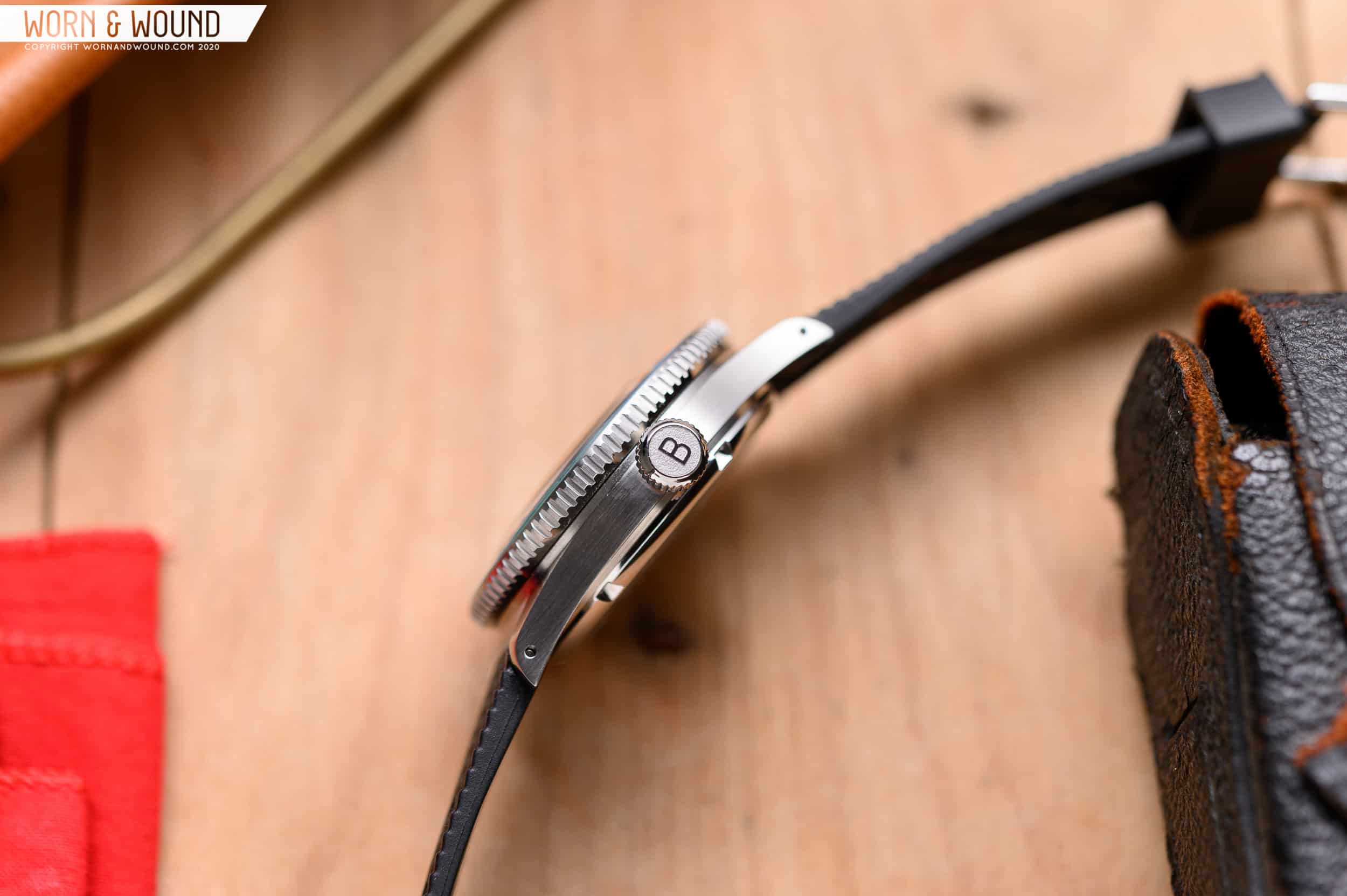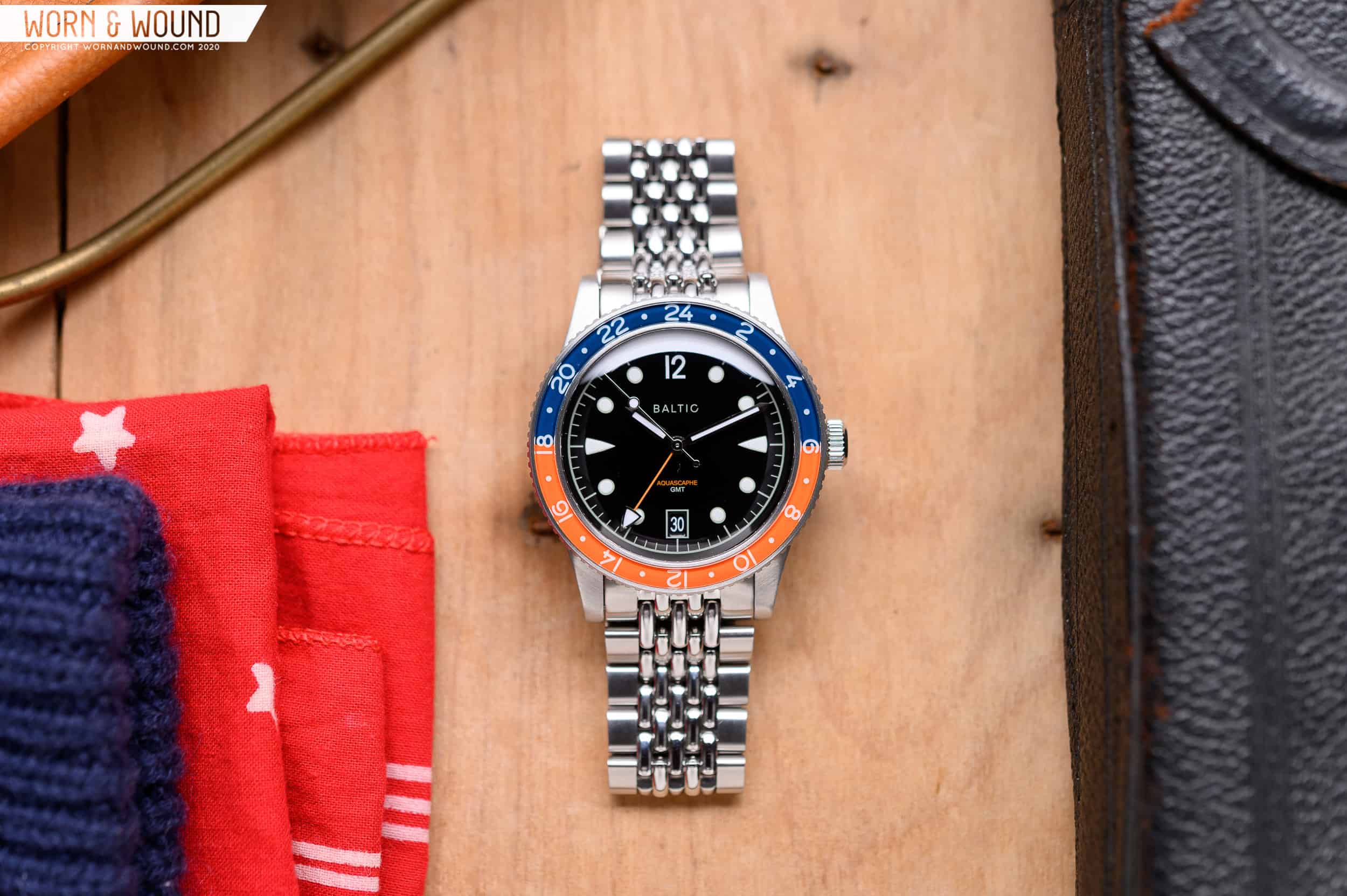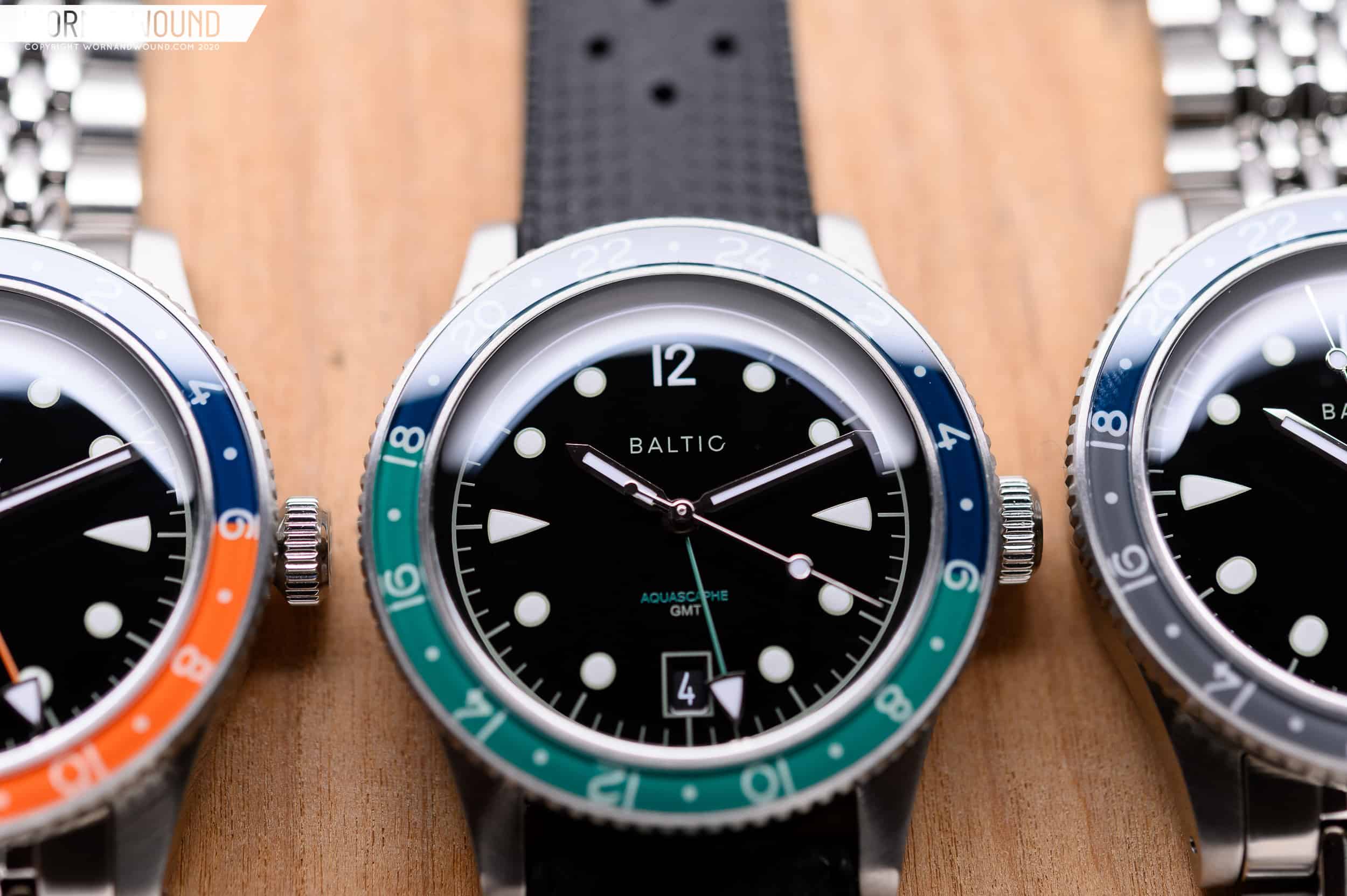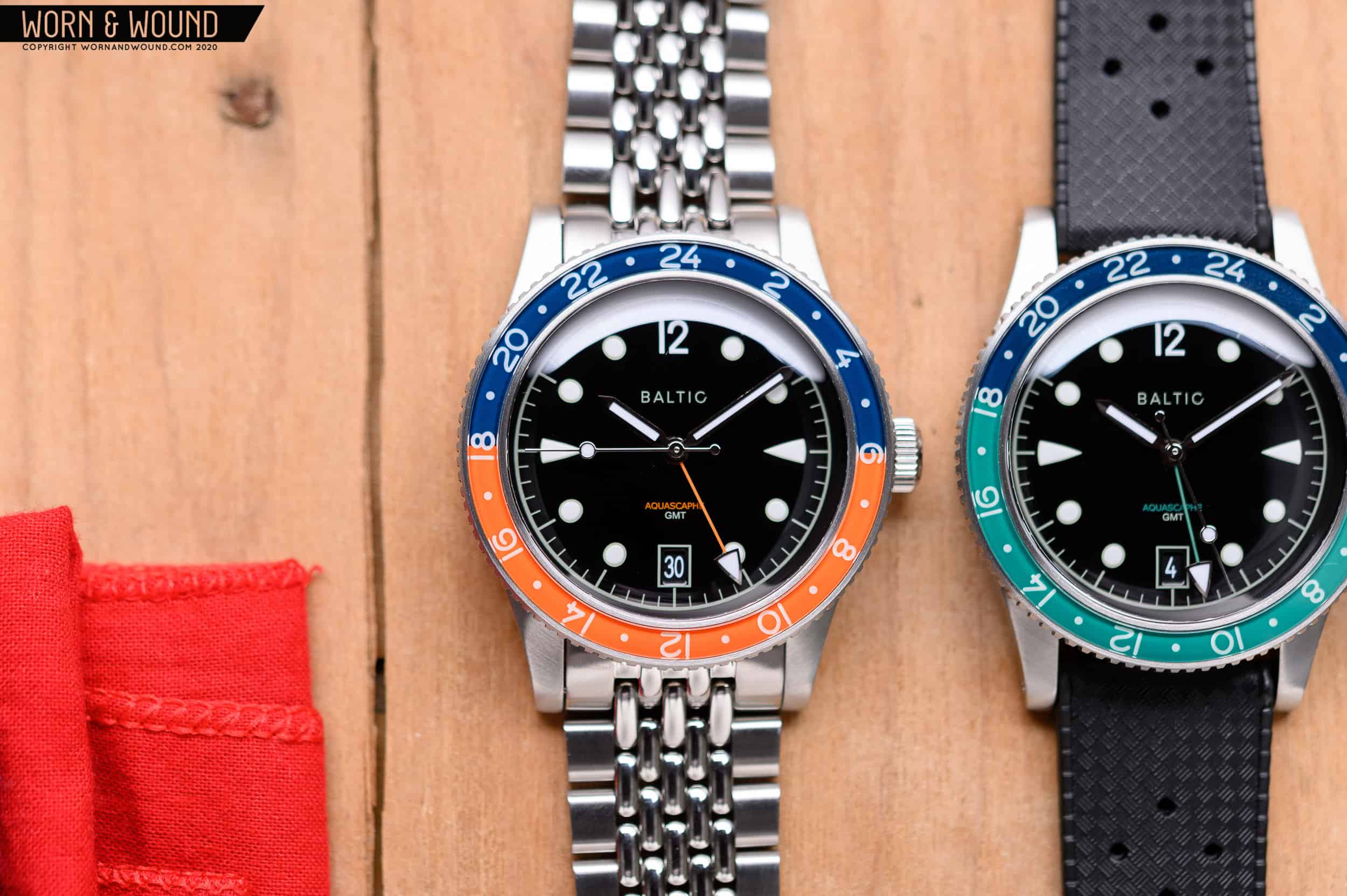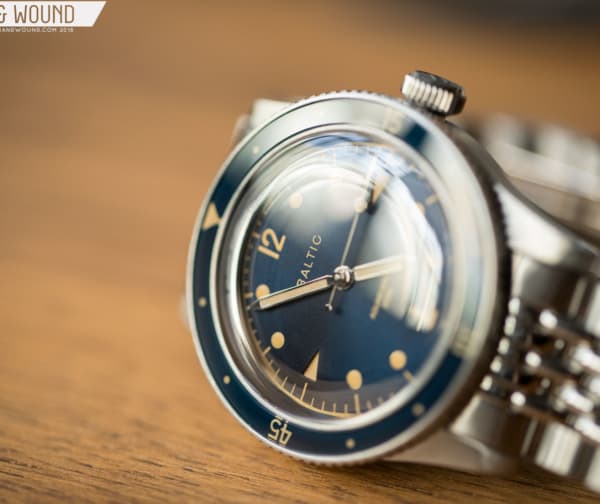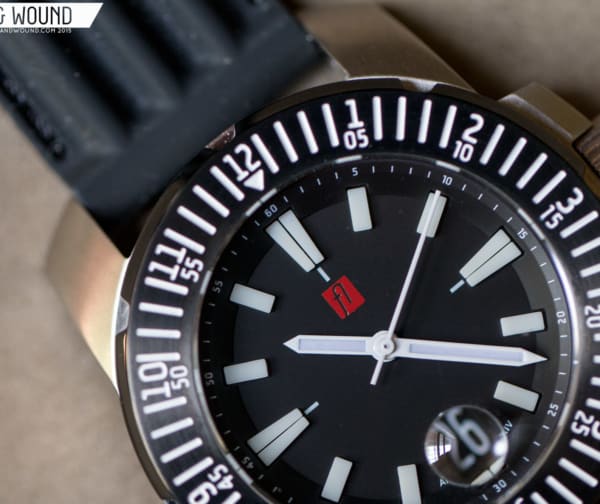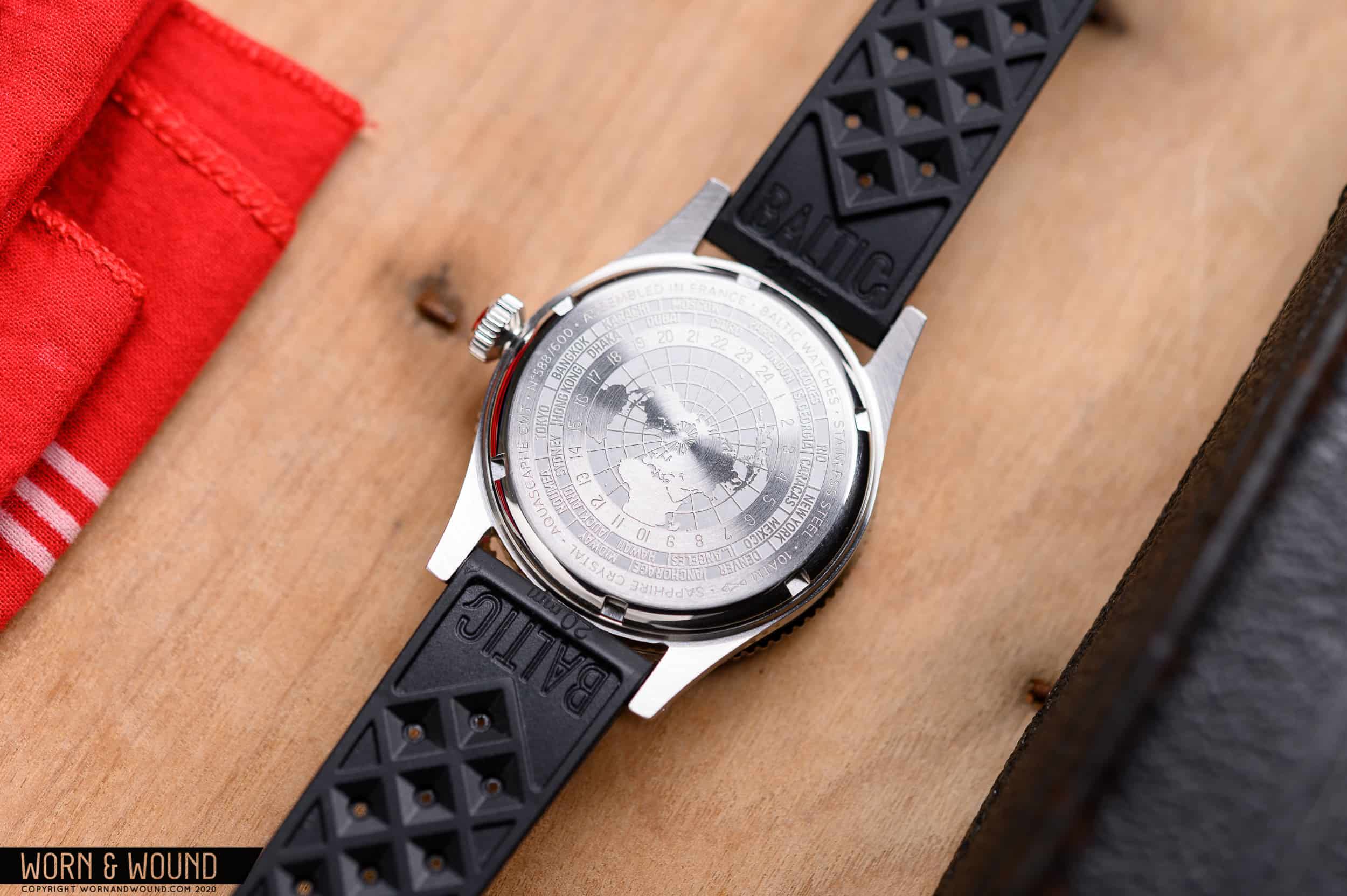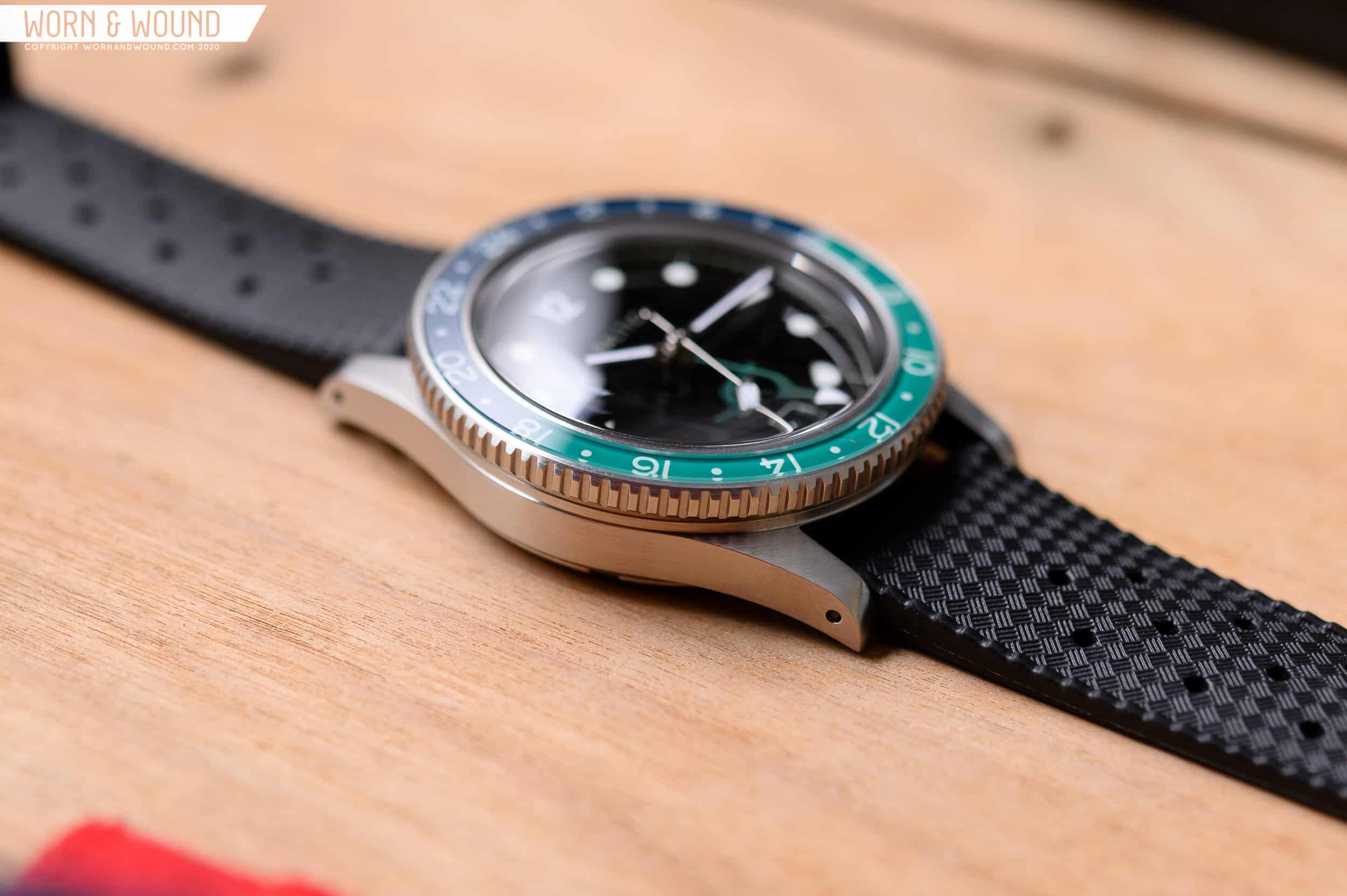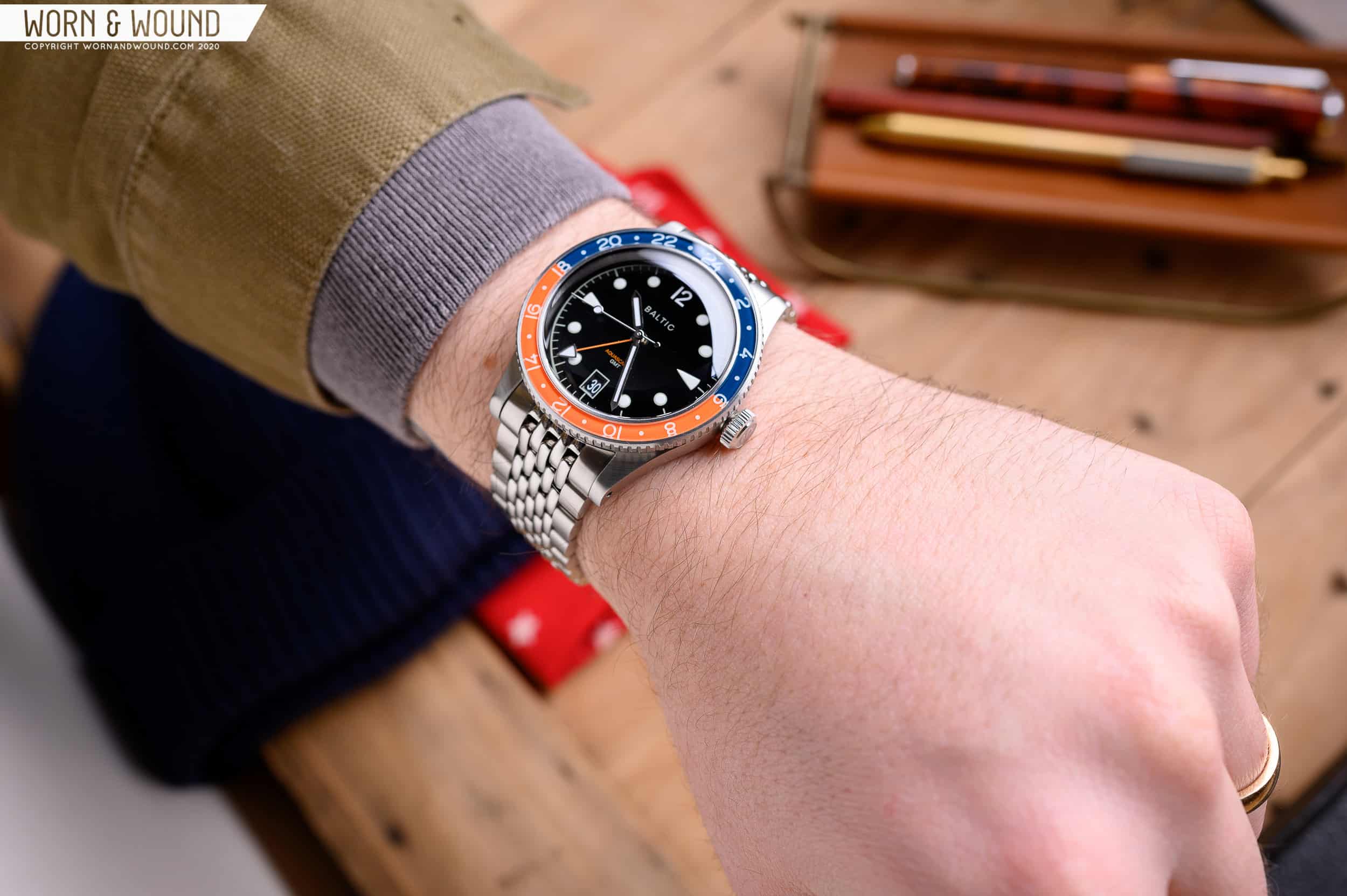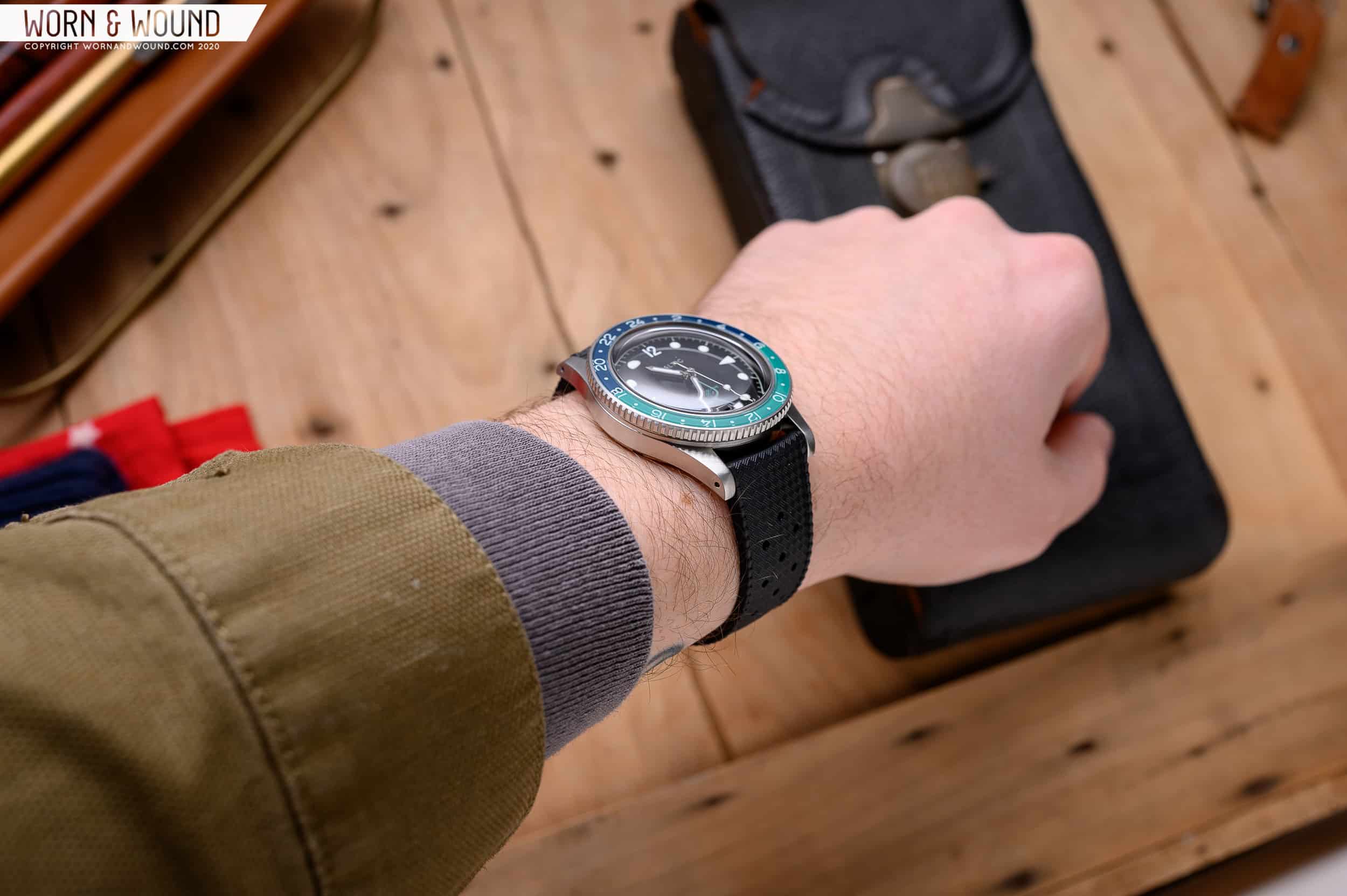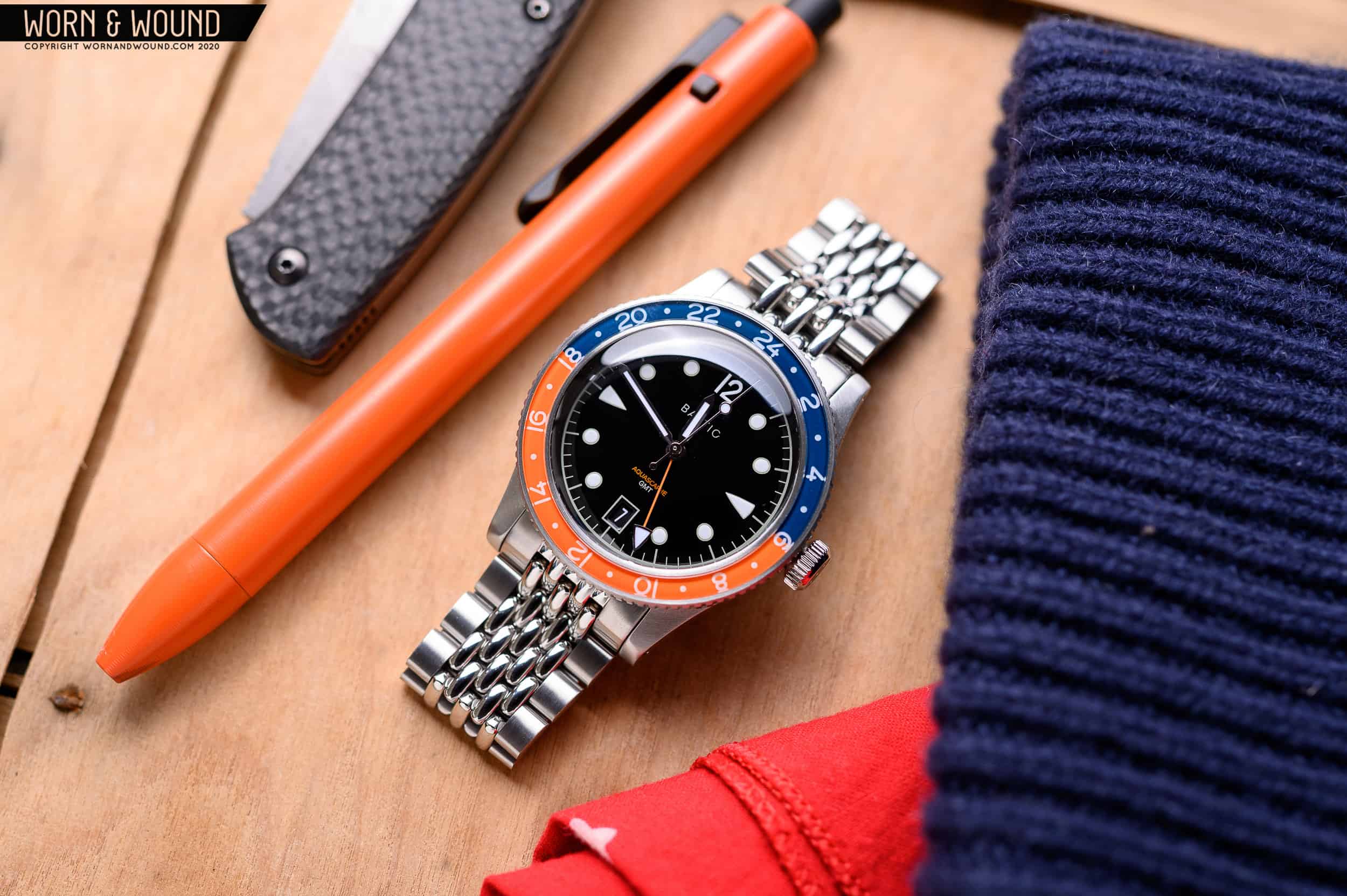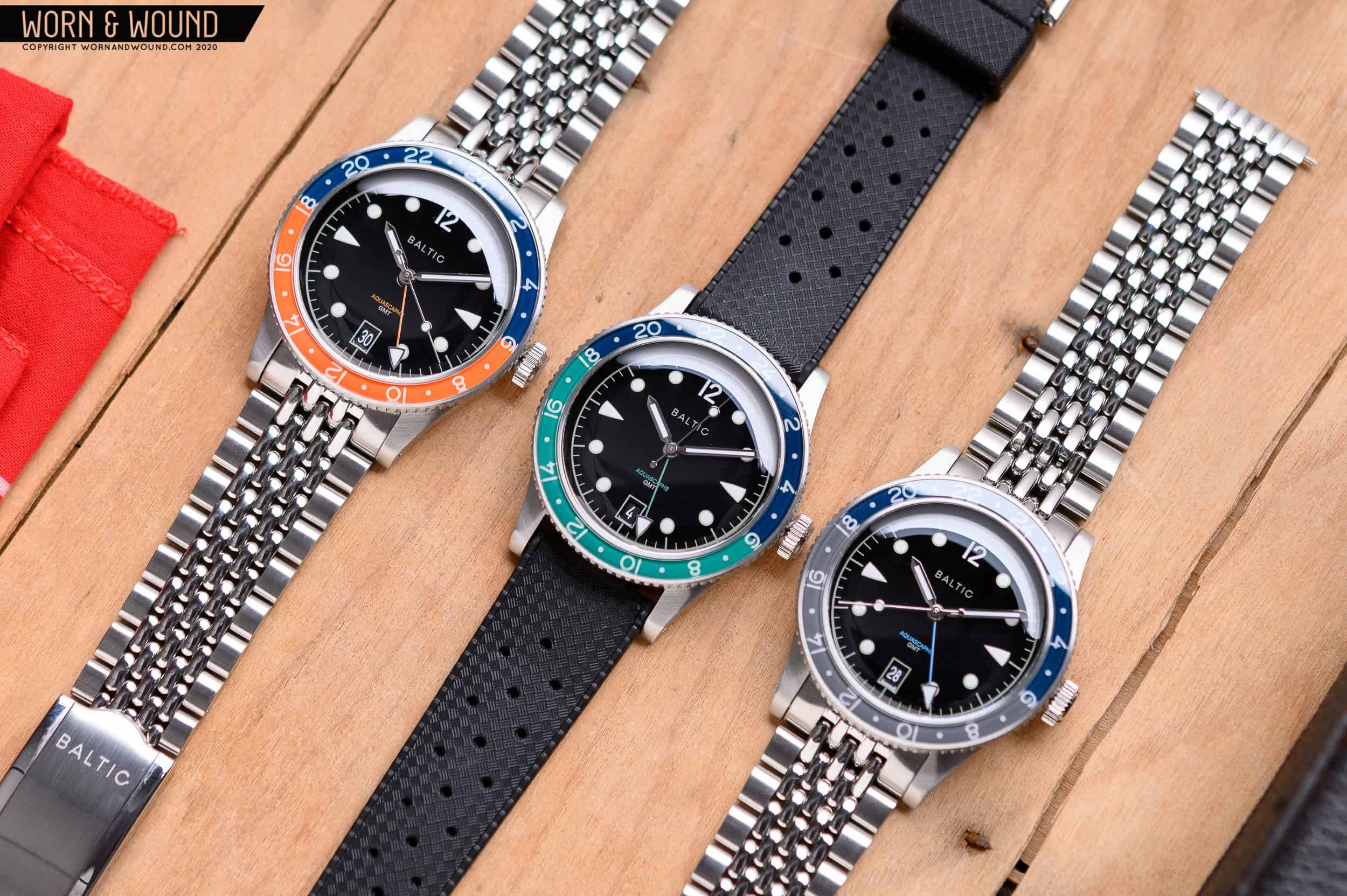Imagine yourself at a watch counter, somewhere in Europe. You want to pick out a new travel companion while on your big Swiss ski trip. It’s the mid-1960s, right at the height of the “Golden Age” of air travel. It was a time when you had to dress up to get on a plane — suit and tie were required, real meals were served, smoking was practically encouraged, and you could actually stretch your legs out in front of you (8+ hours in a smoke and booze filled tube with no noise cancelling headphones or in-flight movie sounds a bit hellish to me). Despite the health concerns and prohibitive cost, there’s no denying that nostalgia for the 1960’s is still strong even today. Back to the watch counter — You want a new watch that can track the time where you are, but also what time it is back at home. Something with a GMT function is a no-brainer. It’s very easy to picture the new Baltic GMT Aquascaphe right alongside a shiny Rolex GMT Master 1675 or a slightly more funky Zodiac Aerospace GMT. What are you reaching for? Today, we’re going to pretend that we picked up the new Baltic GMT Aquascaphe. While the 1960’s are long gone, the appeal for vintage and vintage-inspired watches is stronger today than ever.
Baltic’s charming take on the GMT is inspired heavily by the original GMT watches of the 1960’s. A modestly-sized 39mm case, two-tone GMT bezel coloration, and beads of rice bracelet represent the vintage aesthetic, but the watch is firmly modern in construction and materials. The 100m water resistant case sports a highly scratch-resistant domed sapphire, while the bezel features its own sapphire glass protecting the colored 24-hour scale underneath. The watch is a blast from the past that’s brought into the modern era through playful use of color and solid construction, but retains all of that vintage charm that draws us into watches of this style. Let’s dig in and take a closer look at this new GMT timepiece from France’s Baltic Watches.









 Featured Videos
Featured Videos




